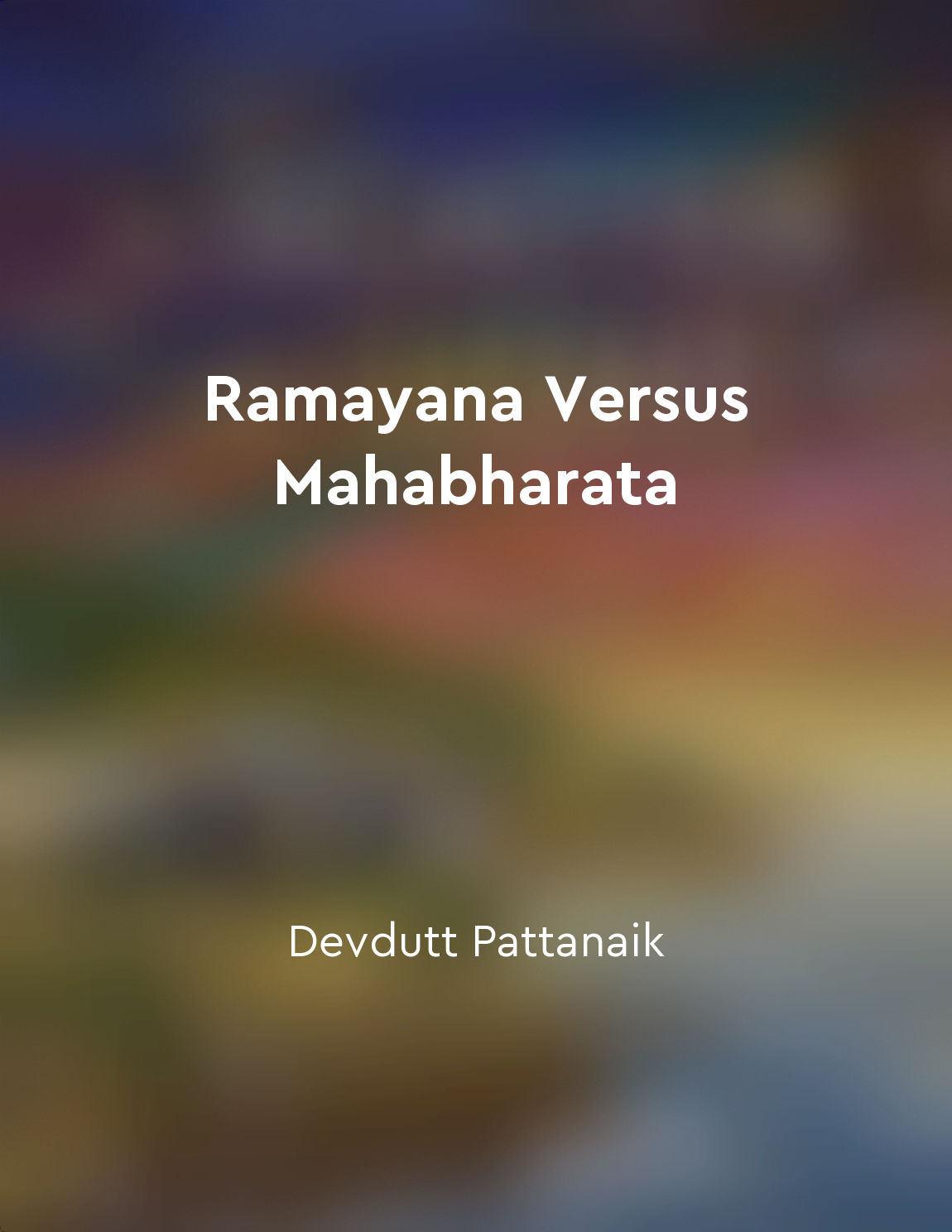The Kurukshetra war from "summary" of The Mahabharata by Dwaipayana Vyasa
The great war of Kurukshetra, which lasted for eighteen days, is a monumental event in the epic of Mahabharata. It was a war fought between two factions of the Kuru dynasty, the Pandavas and the Kauravas, over the rightful succession to the throne of Hastinapura. The roots of this war can be traced back to the longstanding animosity and rivalry between the two branches of the family, which had only grown stronger over time. The Pandavas, led by Yudhishthira, were the rightful heirs to the throne, but they were deprived of their kingdom and exiled by their cousins, the Kauravas, led by Duryodhana. The Kauravas, driven by envy and greed, refused to give up the throne and were unwilling to negotiate a peaceful settlement. This led to the inevitable confrontation on the battlefield of Kurukshetra. The war was not just a physical battle between two armies, but a moral and ethical struggle between righteousness and unrighteousness. The Pandavas fought for justice, truth, and dharma, while the Kauravas fought for power, wealth, and selfish desires. The stakes were high, and the outcome of the war would determine the future of the Kuru dynasty and the fate of the world. The war was filled with countless acts of heroism, sacrifice, and tragedy. The battlefield of Kurukshetra witnessed the clash of mighty warriors, the display of divine weapons, and the intervention of gods and celestial beings. The war also tested the limits of human endurance and challenged the warriors to confront their inner demons and moral dilemmas. In the end, the Pandavas emerged victorious, but at a great cost. The war took a heavy toll on both sides, with countless lives lost and families torn apart. The aftermath of the war left a deep scar on the land of Kurukshetra and the hearts of the survivors, who were left to grapple with the consequences of their actions. The war of Kurukshetra remains a powerful and enduring symbol of the eternal struggle between good and evil, righteousness and unrighteousness. It serves as a cautionary tale about the destructive consequences of greed, envy, and power-hungry ambitions. The lessons learned from the war of Kurukshetra continue to resonate with readers and audiences, reminding us of the importance of upholding dharmaSimilar Posts

Birth of the Kuru princes
In the city of Hastinapura, King Santanu of the Bharata dynasty was married to the goddess Ganga, who had assumed human form. T...
Fall of Bhishma
The great warrior Bhishma, known for his unparalleled skills and unwavering loyalty, played a crucial role in the epic battle o...

Ramayana's Valmiki is sage, Mahabharata's Vyasa is storyteller
In the Ramayana, Valmiki is portrayed as a sage, a seer who is able to see the past, present, and future. He is a wise and lear...
The showdown between Arjuna and Karna
The monumental clash between two great warriors, Arjuna and Karna, is a pivotal moment in the epic Mahabharata. The animosity b...
Fall of Bhishma
The great warrior Bhishma, known for his unparalleled skills and unwavering loyalty, played a crucial role in the epic battle o...
Bhagavad Gita teachings by Lord Krishna
The Bhagavad Gita is a part of the great epic Mahabharata, where Lord Krishna imparts his teachings to Arjuna on the battlefiel...
Indian art and architecture reflect diverse cultural influences
The art and architecture of India showcase a rich tapestry of influences from various cultures over the centuries. From the anc...

Striving for spiritual growth and enlightenment
Striving for spiritual growth and enlightenment is the ultimate goal for a human being. It is not merely about material success...
